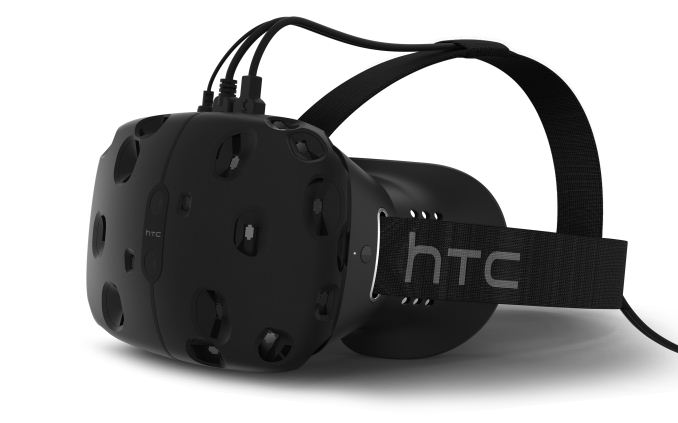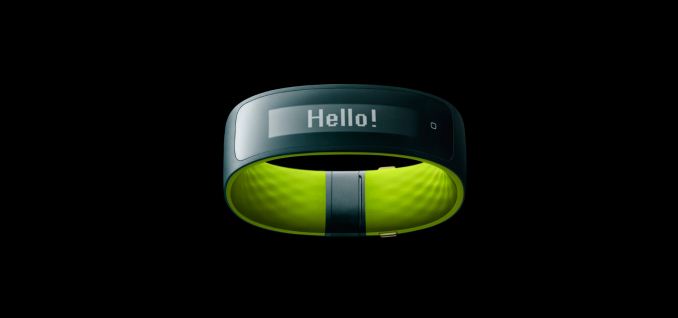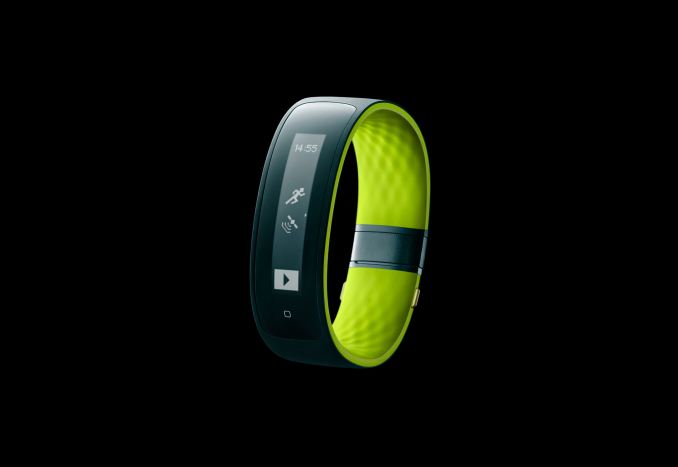HTC Announces VIVE, a Valve VR Headset, and Grip, a Fitness Band
by Joshua Ho on March 1, 2015 10:46 AM EST
In addition to the HTC One M9, HTC is also launching the VIVE, a VR headset. While it may seem a bit strange that HTC is doing this, it makes sense once one realizes that the VIVE isn’t designed as a mobile VR solution at all. Instead, this is a product of HTC’s connected devices division, which is the same group that made the HTC RE.
I was definitely quite skeptical of HTC doing a VR headset. But the key here is that HTC has partnered with Valve to be the first OEM to ship a consumer version of SteamVR which means that this is tethered to a PC rather than utilizing a phone or some other mobile device, and using Valve's tracking and input technology. While they haven’t been able to discuss any real detail, they emphasized that the VR experience would be a whole-room experience rather than a sitting experience. Outside of these details, it was said that the developer kit would be available soon after launch in the spring, with consumer availability by the holidays at the end of the year.
While VR headsets are a type of wearable, the other wearable HTC is announcing today is the Grip, a sports band made in partnership with Under Armor. It seems that this is largely similar to the Microsoft Band, as it has a 1.8” PMOLED display, with a ST-M Cortex M3 MCU.
HTC states that they’re trying to target hardcore athletic trainers with this device, and have equipped it with a GPS tracker along with support for Bluetooth heart rate monitors for improved performance. The fitness band should last up to 2.5 days on its 100mAh battery, and will come in three sizes. The fitness band will be able to work with Under Armor Record, along with other fitness tracking applications. Outside of fitness applications the band also supports some basic features such as remote camera shutter, music controls, sleep tracking, and other similar phone companion applications. The Grip will be compatible with both iOS and Android as well.
The HTC Grip will cost $199 USD and go on sale in the near future.
| HTC Grip | |
| SoC | STM32L151QDH6 (Cortex-M3) |
| RAM/NAND | 8MB SRAM + 16MB Flash |
| Display | 1.8” 32x160 PMOLED, mono |
| Dimensions |
Small: 51.9 x 68.2 x 22.5 mm Medium: 60.98 x 74.57 x 22.5 mm Large: 68.92 x 85.24 x 22.5 mm |
| Battery | 100mAh |
| Connectivity | Bluetooth LE 3.0/4.0, USB (Charging) |












3 Comments
View All Comments
jjj - Sunday, March 1, 2015 - link
Does anything else matter when the price is 199$? That's just shocking for so little hardware. Even 99 would be way too much. Some basic sensors , BT and GPS , a way cheap MCU and little memory plus 4.5 square cm of black and white screen. Hard to say if it costs just 20$ to make but it might....edzieba - Sunday, March 1, 2015 - link
A few more details have been announced on the Vive, including that it will be using a pair of 1200x1080 panels (1 per eye) running at 90Hz. This is very similar to Valve's 'The Room' prototype headset, which used a pair of 1920x1080 panels running at 90Hz using partial refreshing. It looks like HTC took the same design, and physically removed the power portion of each panel (or rather, the panels were fabbed without the unused portion), and added as yet poorly described tracking system. So far, all that has been announced in terms of concrete specs on the tracking system is that it involves 'lasers', and requires a pair of 'base stations'. Whether it is outside-in or inside-out, remains to be seen. The released image of the headset show a vertically separated pair of cameras, but also what look like (but may not be) emissive markers around the body of the headset.overzealot - Monday, March 2, 2015 - link
8MB of SRAM?That would be a pretty hefty chunk of the BOM.
Seems unlikely.